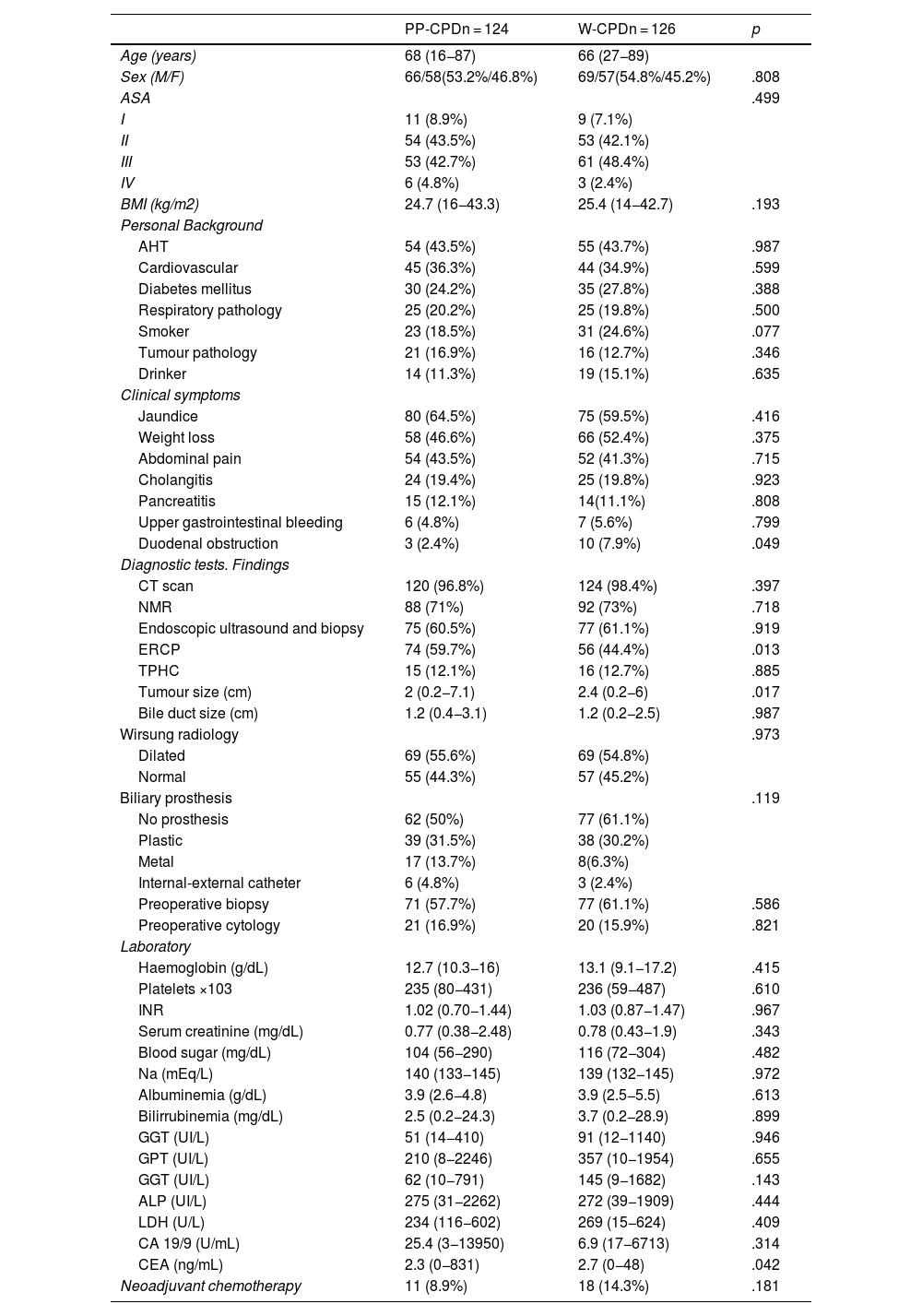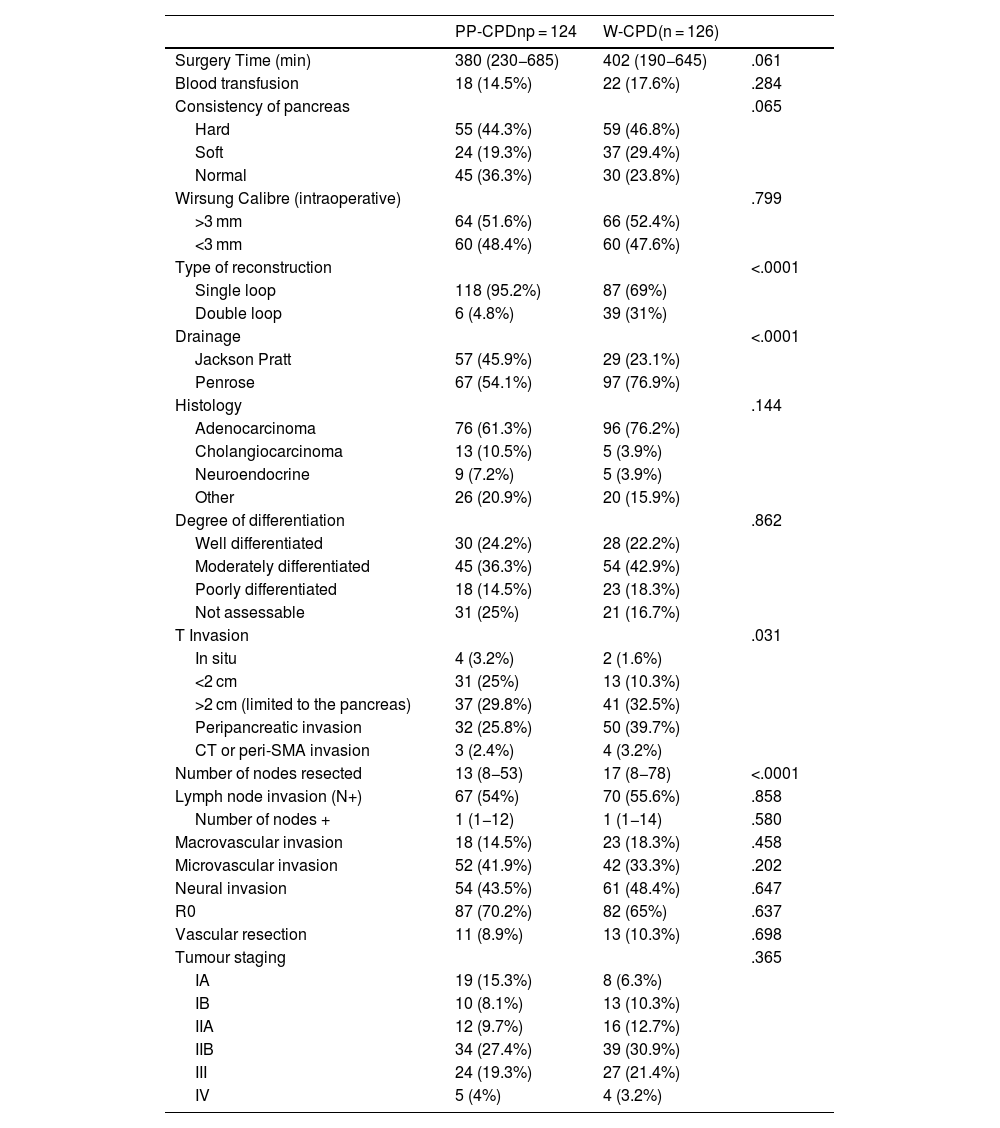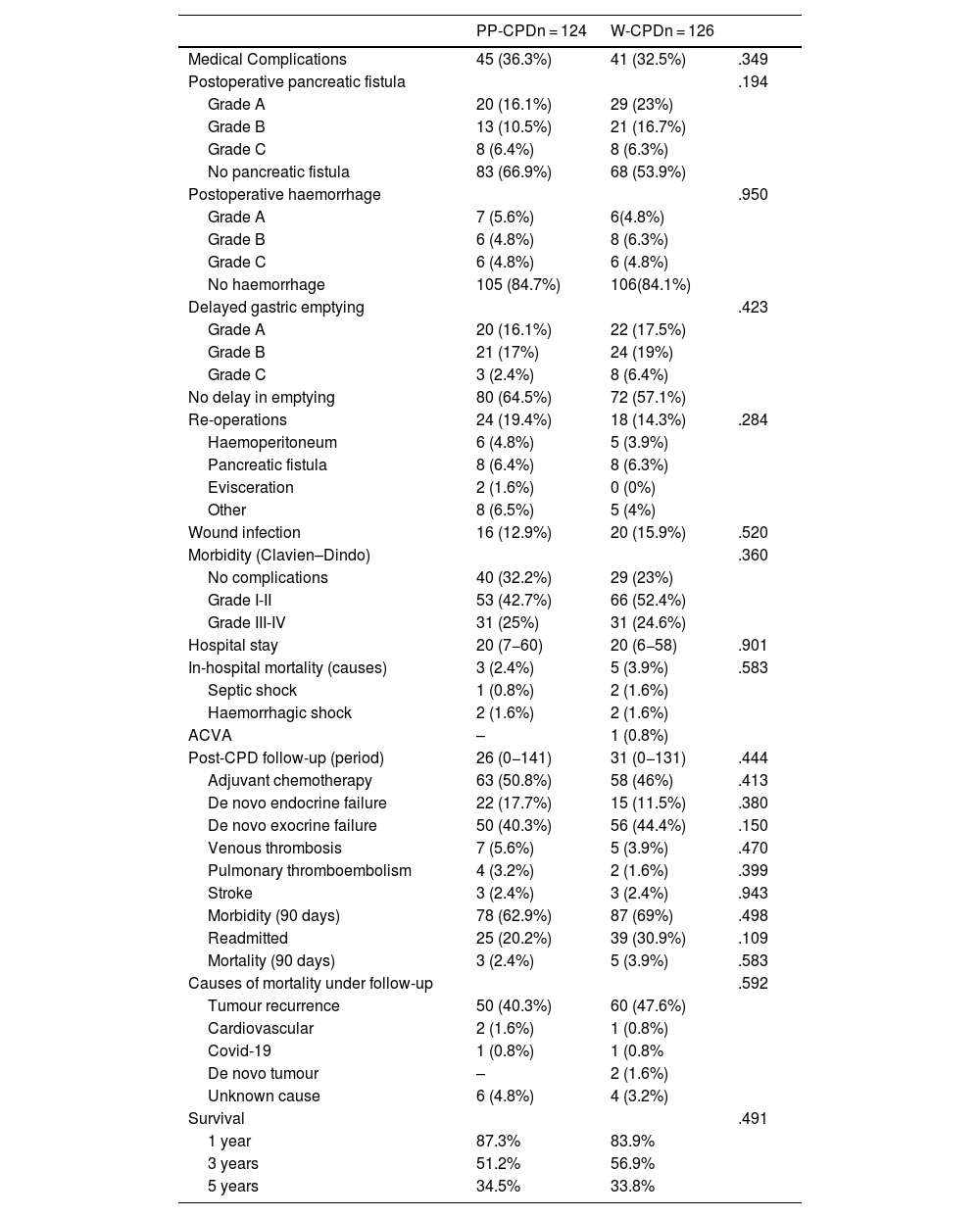Controversy exists in the literature as to the best technique for pancreaticoduodenectomy (PD), whether pyloric preservation (PP-CPD) or Whipple's technique (with antrectomy [W-CPD]), the former being associated with a higher frequency of delayed gastric emptying (DGE).
MethodsRetrospective and comparative study between PP-CPD technique (n = 124 patients) and W-CPD technique (n = 126 patients), in patients who were operated for tumors of the pancreatic head and periampullary region between the period 2012 and 2023.
ResultsSurgical time was longer, although not significant, with the W-CPD technique. Pancreatic and peripancreatic tumor invasion (p = 0.031) and number of lymph nodes resected (p < 0.0001) reached statistical significance in W-CPD, although there was no significant difference between the groups in terms of lymph node tumor invasion.
Regarding postoperative morbimortality (medical complications, postoperative pancreatic fistula [POPF], hemorrhage, RVG, re-interventions, in-hospital mortality, Clavien–Dindo complications), ICU and hospital stay, no statistically significant differences were observed between the groups. During follow-up, no significant differences were observed between the groups for morbidity and mortality at 90 days and survival at 1, 3 and 5 years. Binary logistic regression analysis for DGE showed that binary relevant POPF grade B/C was a significant risk factor for DGE.
ConclusionsPostoperative morbidity and mortality and long-term survival were not significantly different with PP-CPD and W-CPD, but POPF grade B/C was a risk factor for DGE grade C.
Existe controversia en la literatura en cuanto a cuál es la mejor técnica de duodenopancreatectomía cefálica (DPC), si la de la preservación pilórica (DPC-PP) o la de Whipple (con antrectomía [DPC-W]), asociándose la primera a una mayor frecuencia del retraso en el vaciamiento gástrico (RVG).
MétodosEstudio retrospectivo y comparativo entre la técnica DPC-PP (n = 124 pacientes) y la DPC-W (n = 126), utilizadas en pacientes operados, entre y 2012–2023, por tumores de cabeza de páncreas y periampulares.
ResultadosEl tiempo de cirugía fue mayor, aunque no significativo, con la técnica de DPC-W. La invasión tumoral pancreática y peripancreática (p = 0,031) y el número de ganglios resecados (p < 0,0001) alcanzaron significación estadística en DPC-W, aunque no hubo diferencias significativas entre los grupos en cuanto a la invasión tumoral ganglionar.
Con respecto a la morbimortalidad posoperatoria (complicaciones médicas, fístula pancreática [FPPO], hemorragia, RVG, reintervenciones, mortalidad intrahospitalaria, complicaciones según Clavien–Dindo), estancia en UCI y hospitalaria, no se observaron diferencias estadísticamente significativas entre los grupos. Durante el seguimiento tampoco se observaron diferencias significativas entre los grupos con relación a la morbilidad y mortalidad a 90 días y supervivencia a 1, 3 y 5 años. En el análisis de regresión logística binaria para el RVG se observó que la FPPO relevante binaria B/C fue un factor de riesgo del desarrollo del RVG.
ConclusionesLa morbimortalidad posoperatoria y supervivencia a largo plazo no fueron significativamente diferentes con la DPC-PP y DPC-W, pero la FPPO binaria B/C fue un factor de riesgo de RVG grado C.














